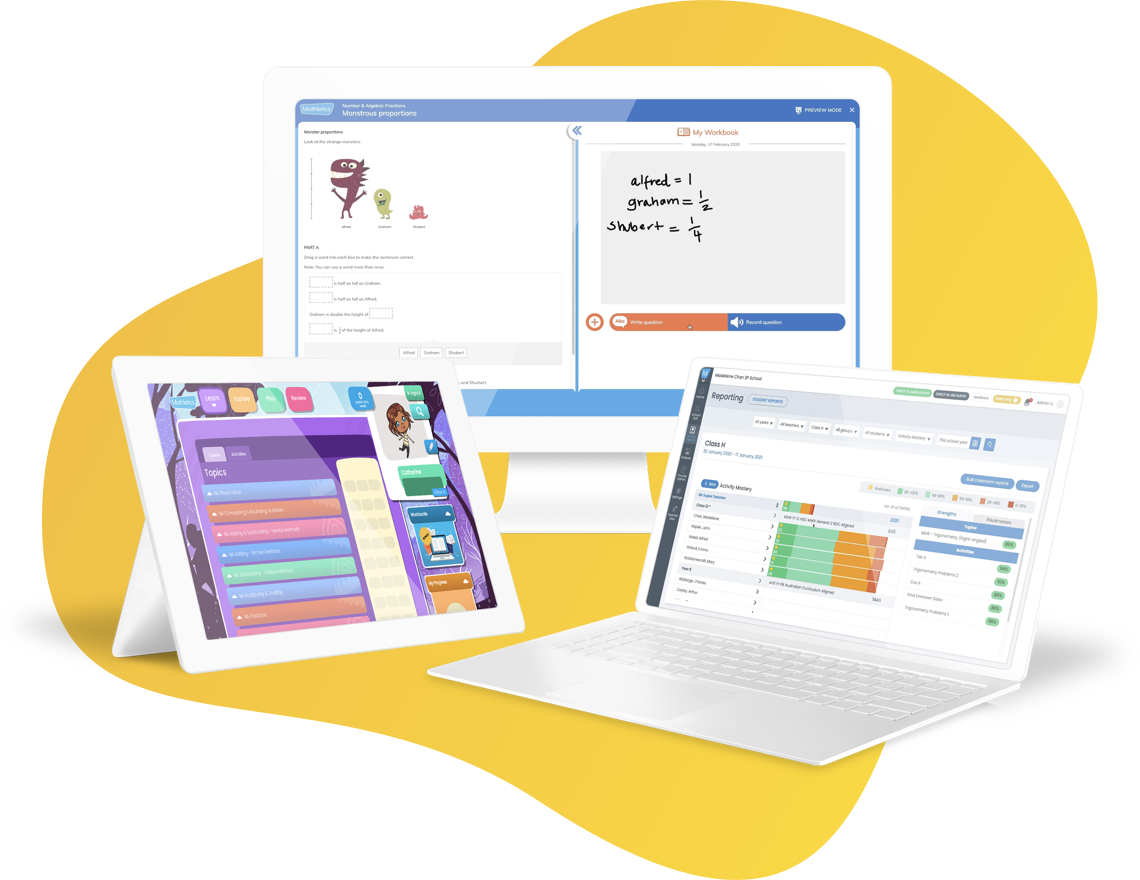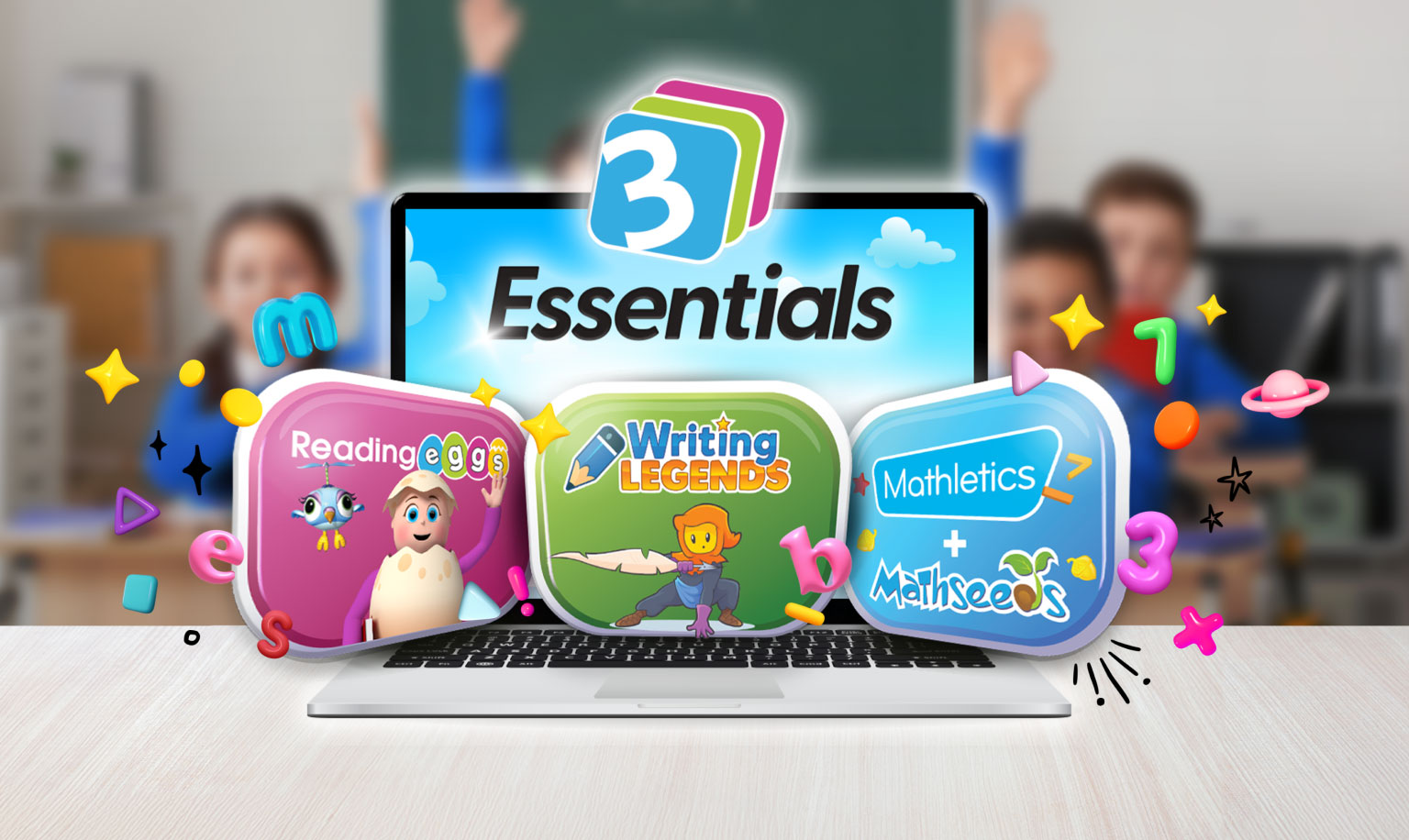
In summary: Mathematical fluency is the combined ability of students to recall mathematics facts and concepts without thinking, their number sense, flexibility of thinking, appropriate and efficient responses to problems, the accuracy of their answers, and their understanding of representations in mathematics.
While worldwide curricula have slightly different approaches, mathematical fluency is made up of:
- Number sense
- Accuracy
- Flexibility and Appropriate Response
- Efficiency
- Automaticity
- Representational fluency
Number sense
Number sense is the combined abilities that allow students to understand how numbers work. Number sense includes:
- Understanding concepts like more, fewer, less, larger, smaller
- Recognising symbols that represent numbers (like 7 and seven)
- Ability to make comparisons (eg knowing 5 is more than 3)
- Understanding number sequences (eg counting 1-100, 1st, 2nd, 3rd and so on)
- Understanding the relative size of numbers
Accuracy
A past NCTM president, Linda Gojak, says,
Accuracy extends beyond just getting the correct answer. It involves considering the meaning of an operation, recording work carefully, and asking oneself whether the solution is reasonable.
To begin solving a problem, students must understand what the problem is asking them to find using concepts and/or skills they have learned.
Flexibility and Appropriate Response
Flexibility and appropriate response refer to students’ scope and application of mathematical knowledge – basically, how much they know about the mathematics they’re tackling and ways they can tackle it.
Students need to know multiple ways to solve problems. This flexibility of thought allows them to find the most appropriate way to solve a problem. Usually, the more efficient the approach is, the more appropriate it is.
Efficiency
Efficiency is the shortest path between the problem and the solution, and its benefits are twofold. First, it helps with recall speed, and second, it allows students to stay focused and not lose their train of logic while answering a problem.
Here’s a less efficient pathway:
Counting by ones to solve an addition problem-solving 6 + 9 by starting at 6 and counting on 9 more to get 15.
Compared to a more efficient pathway:
A more efficient way of solving the same problem, 6 + 9, would be to start at 9, and count up 6 more to 15 and an even more efficient way of solving this problem would be to make a group of ten by taking 1 away from 6 which makes 5 + 10 which equals 15.[/imageframe][fusion_text]
Automaticity
Automaticity is the ability to provide a correct answer without consciously thinking – or more simply, it’s mathematics reflex. This is the almost instantaneous solving of a problem to the point where the question and the answer are synonymous. For example, 5 x 5 and 25 are seen as the same thing.
Automaticity is important in fluency for three reasons:
- It’s a predictor of performance success in mathematics tests
- It reduces cognitive load (the amount of work a students’ brain has to do)
- It increases the accuracy of students’ calculations
Early development of automaticity in students is important. Students who develop these reflex skills are more likely to find continued success with mathematics
Representational fluency
Representational fluency is the ability to connect and translate values across symbols and objects.
As an example:
3 x 6 =18
3 x = 18
What is the value of ?
Representational fluency can be measured by:
- The ability to convey a mathematical idea in various forms
- Knowing when to use a mathematical representation and the benefit of doing so
- The ability to translate between and within modes of representations
- Use of representations to flexibly solve problems
Why is mathematical fluency important?
There are three interdependent reasons that mathematical fluency is critical for student development.
It develops independent thinkers
Mathematical fluency gives students independence. Instead of relying on fingers or blocks to count, or times table posters for multiplication, or mathematical formulas to find the surface area and volume of 3-dimensional shapes students are free to develop deeper mathematical knowledge.
Saves mental resource
The less energy students must dedicate towards simple mathematical problems, the more they’ll have for more difficult problems. This helps students maintain focus on the problem at hand, focus on the logical progression of the solution, and in more complex questions, provide the boost they need to deliver creative thinking.
Saves time
Just like saving mental resources, but with two distinct benefits: it helps students stay focused on longer questions and perform better during tests.
How do we develop strong mathematical fluency in students?
The Three Key Stages of Mathematical Fluency Development
Stage 1 – Skill Acquisition
The goal of skill acquisition is accuracy, so it’s important to guide students through solutions.
For example, if we’re teaching students how to add numbers to make 10, We might use ten frames or 10 snap cubes of two different colours. By building this foundation of understanding, we’re planting this process into students’ long-term memories.
To develop students skill acquisition, you can use skill-based games or develop well-planned, sequenced activities that gradually demand more skills from students.
Stage 2 – Fluency building
The goal of fluency building is memorisation. This normally occurs as a result of repeated practice, but it can be reinforced with memorisation tricks or computational strategies (like counting on fingers).
Stage 3 – Application
The goal of the application is automaticity. Through the practice of the skills they’ve acquired and the memories they’ve constructed around different mathematical concepts, students become faster, more accurate, and more mathematically fluent.
What are the challenges in developing math fluency?
Building students’ number sense
– Finding the time and opportunity to have students develop their number sense
– Doing the thinking for students when under pressure
– Finding good ways to assess number sense
– Assigning tasks that don’t promote an understanding of numbers
Finding and use of manipulatives
– Finding manipulatives
– Lack of understanding of what a manipulative is and how to use it
– Finding a physical place to store manipulatives
– Understanding how to use a single manipulative in multiple ways
– Transitioning from a manipulative to paper/pencil
Understanding and implementation of mathematical fluency
– Teachers not fully understanding what it means
– Finding the time to help deliver quality lessons on mathematical fluency
What are the core components of good mathematical fluency lessons?
- Number sense – especially important with early learners, helping students maintain their understanding of how numbers work together and make sense of each other will cement their base understanding
- Frequency – have consistent, frequent mathematics lessons that reinforce the learning of particular subjects or skills. Students can seem like they’ve got a good grasp of a subject after a single lesson, but chances are they’ll forget it by the next
- Variety – performing the same problems can get tedious for students. To keep them motivated to learn, we can provide new ways to look at or solve problems that they’ve already visited
- Engagement – fun lessons keep students’ focus on what’s in front of them. The more engaged they are with their learning, the more they’ll be able to memorise and apply later one
- Autonomy – allowing students to work on fluency and practice at their own pace and in their own time can foster independent math thinking











